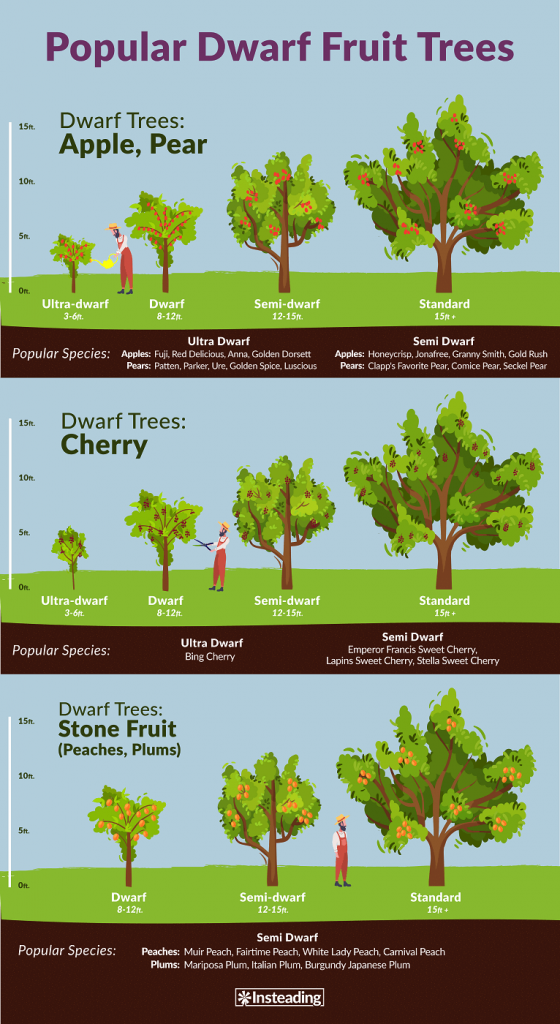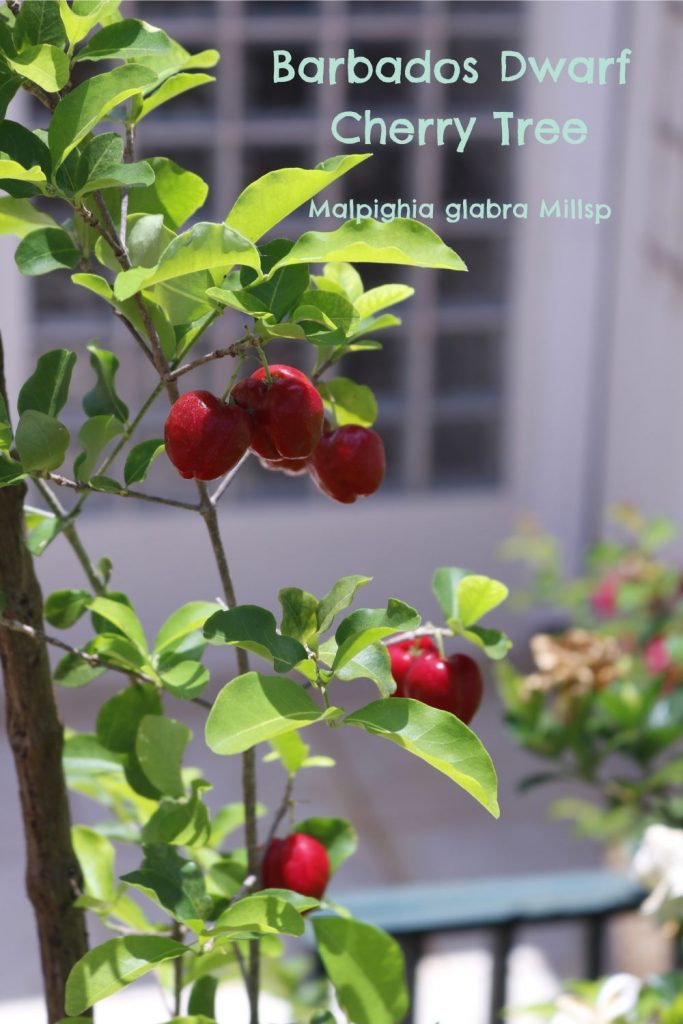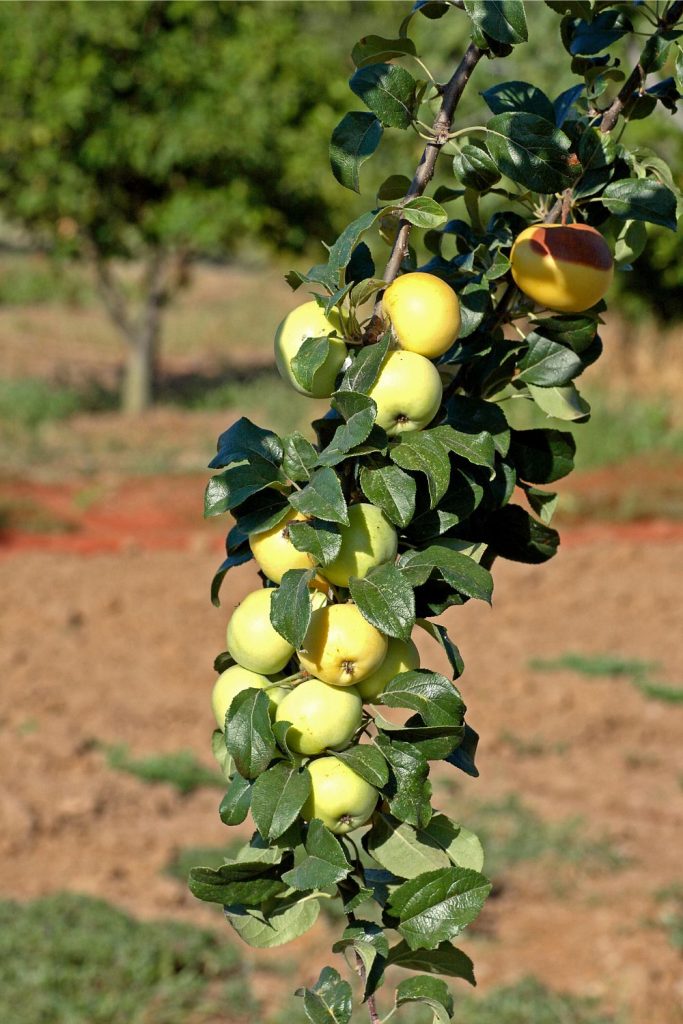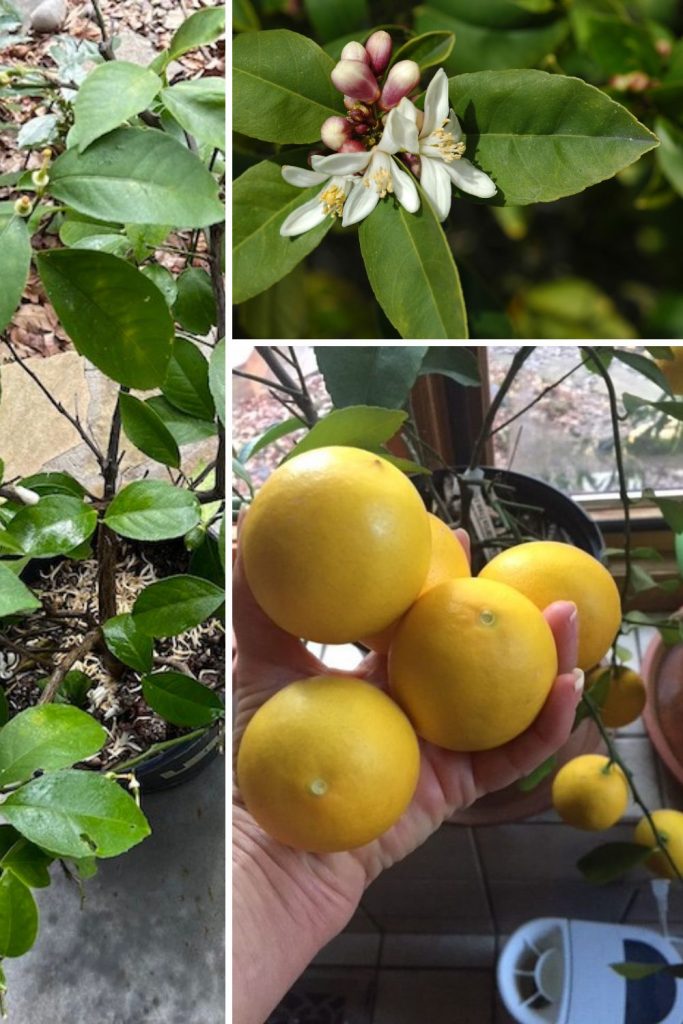So you want to grow fruit trees that are not high maintenance? Smart! As with all species of plants, some require more maintenance than others. To help you in your quest, we’ve compiled this short list of the easiest fruit trees to grow.
How to Identify Easiest Fruit Trees to Grow
When it comes to food crops and especially fruit trees, the greatest threat to healthy trees and fruit harvests is disease and pests. Pests include birds, deer, racoon, and even bears! So the most important factors to consider when looking for easiest growing fruit trees, are pest and disease resistance.
Many varieties of fruit trees, once established, require little to almost no work from you again until harvest time. That means you can harvest dozens of pounds of food every year automatically without any additional planning or prepping.
Benefits in Planting Fruit Trees
- Food security – fruit trees are perennial plants that bear for many years, from 12 years to over 100 years.
- Investing in your future – buy and plant it once and with a little care, it will serve you for many years to come.
- Many uses for fruit – when the harvest rolls in, most people employ multiple methods for preserving their harvest:
- fresh
- frozen
- dehydrated
- freeze dried
- cooked
- canned
Investing in Your Future
Planting fruit trees is one of the smartest food investments you can make in your property. But surprisingly to newbies, they can be challenging to grow so we wanted to know: What are the easiest fruit trees to grow?
In this article we cover some basic types and varieties to set you on your journey of discovering the best for you and your needs.

Image by insteading.com
Dwarf Fruit Trees Are the Easiest to Harvest
Keep in mind as you read this list that all fruit trees can be turned into dwarf or semi-dwarf varieties. All it takes is grafting your desired cultivar onto a healthy, appropriate rootstock. You can purchase your variety from a nursery as a dwarf or semi-dwarf, or you can do it yourself at home.
Semi-dwarf trees produce about fifty to seventy-five percent of the fruit of a full-sized tree, while a dwarf produces twenty-five to thirty-three percent of the fruit of a full-sized tree. The perk to dwarf and semi-dwarf trees is that it’s much easier to pick the fruit because the tree is smaller.
If you don’t like moving and climbing ladders, dwarf fruit trees can be an excellent alternative for you. Another reason why people choose these varieties is that they don’t obstruct any views or second-story windows of houses.
Dwarf fruit trees are essential for smaller yard gardens. Espalier fruit trees add beauty and functionality to your landscape and can be grown even in neighborhoods with strict homeowners association (HOA) rules.
Semi-dwarf trees produce 50-75% of the fruit of a full-sized tree.
Dwarf fruit trees produce 25-33% of the fruit of a full-sized tree.

EASIEST FRUIT TREES TO GROW
In the follow profiles, the age, size, life span and approximate fruit yield, where available, is an approximate average and can vary by tree, growing environment and climate conditions. So these are provided as guidelines rather than absolutes.
Where pounds of fruit produced is provided, it’s generally estimated as a range to include dwarf, semi-dwarf and full size, unless a specific sized tree is specified.
Barbados Cherry Tree, USDA Hardiness Zones 9b – 11
Can Grow Indoors in Pots in Winter
- Scientific Name: Malpighia glabra Millsp
- Years to First Fruit: 3
- Fruit-Bearing Years: 40 years
- Size at Maturity: 12 feet tall by 12 feet spread
- Pests & Disease: nematodes, plant bugs (attack & deform fruit), whiteflies, scale[1]https://edis.ifas.ufl.edu/pdf/FP/FP39000.pdf
As you may have guessed based on the name, the Barbados cherry is a tropical cherry tree that needs almost no attention from the gardener to thrive.
This tree was created to produce cherries that could survive extreme heat, the tropics, or even the desert. Because the tree was created to survive so much, the cherries do taste a little different from traditional cherries. However, they are delicious and remind most people of a cherry fruit punch with a sweetly tangy flavor.
The fruit is a dark maroon red and very sweet. These cherries don’t have pits; they have seeds and about one to three per cherry at that. They’re soft, though and can be eaten with the cherry without any issue.
This tree is said to be good for container gardening, so can be an indoor / outdoor cherry tree in non-tropical climates as it does not tolerate frost, especially as a sapling. It will produce cherries in a container and can be pruned to stay an appropriate size for indoor living.

Juliet Dwarf Cherry Tree, Cold Hardy in Zones 2 – 7
- Scientific Name: Prunus fruticosa x Prunus cerasus
- Years to Fruit: 4 years
- Fruit-Bearing Years: 30-40 years
- Size at Maturity: 6-8 feet tall and 5-6 feet spread
- Hardiness Zones: 2-7
- Pests & Disease: not prone to pests and disease
About Juliet Cherry Tree
This dwarf cherry tree is self-pollinating and produces sweet cherries that are cold hardy. The cherries can range from a deep, dark purple to bright, vibrant red.
This is the best cherry tree for cold climates, in my opinion, because the cherries are suitable for eating fresh, canning, freezing, or baking into a pie.
Since Juliet cherries are created by combining sweet cherries with sour cherries to make it cold hardy, there is a delightful tart undertone that adds a lot of flavor and interest to the fruit. Don’t worry though, it is still exceptionally sweet, and it’s hard for me to believe that it has a “sour” background.

Lambert Cherry Tree, USDA Hardiness Zones 4 – 8
- Scientific Name: Prunus avium
- Years to First Fruit: 2-3
- Fruit-Bearing Years: 30
- Pounds of Fruit: 50 lbs
- Size at Maturity: 25 feet tall by 25 feet spread
- Pests & Disease: resistant
This self-pollinating tree blooms late in the season and produces giant bright red cherries that taste sweetly crisp. They can be used for eating fresh, cooking, baking, or preserving in a can or the freezer. The Lambert cherry trees are pest resistant and do well in both partial and full sunshine.
They put up with long cold winters and lots of rain, clouds, and snow, and because of this, they are popular in the Pacific Northwest, especially around Flathead Lake in northwestern Montana. This is one of the most popular types of cherries found in grocery stores, as most of these cherries are transported around the country after harvest.
Lambert cherry trees produce as much as fifty pounds of cherries each year while in their prime.

Other Low-Maintenance Cherry Trees to Consider:
- Montmorency – Best Sour Cherry
- Bing – Best Sweet Cherry
- Nanking – Handles cold winters, hot summers, and the occasional drought
- Western Sand – a shrub, not a tree, that is self-pollinating and produces a lot of fruit within reach.
Liberty Apple Tree, USDA Hardiness Zones 4 – 7
- Scientific Name: Malus domestica ‘Liberty’
- Years to First Fruit: 3-4 years
- Fruit-Bearing Years: 80 years
- Pounds of Fruit: 90 lbs dwarf tree; 300 lbs full size tree
- Size at Maturity: 15 feet tall by 15 feet spread
- Pests & Disease: Disease resistant, but not pest resistant
Size at Maturity: 20 to 25 feet tall and 25 feet wide
Liberty apples are similar to McIntosh apples because they are ideal for making ciders and are naturally tart, crisp, and juicy. The apples are medium to large in size and have a shiny, rich red color. You’ll know it’s ripe when small freckle-like dots begin to appear.
The best part about these trees is they are resistant to scab, mildew, firelight, and cedar apple rust. This tree is also self-pollinating, so no other varieties are needed to produce fruit.
Other Low-Maintenance Apple Trees to Consider:
Fruit Trees Best for Hot Climates
Disease Resistant Fruit Trees
Curlfree Peach Tree, USDA Hardiness Zones 5 – 11
- Scientific Name: Prunus persica ‘curlfree’
- Years to First Fruit: 3-4 years
- Fruit-Bearing Years: 12 years
- Pounds of Fruit: 3″ fruits for 50-150 lbs per year
- Size at Maturity: 10-15 feet
- Pests & Disease: Disease resistant; moderately vulnerable to deer
See natural deer deterrents and deer resistant plants and flowers.
This wonderful self-pollinating peach tree can withstand very cold temperatures (for peach tree standards) and is very disease, pest, and fungus resistant. It is not entirely deer-resistant, but is one of the better varieties that deer avoid more than others.
This tree produces many peaches each year, which are yellow to dark gold with splashes of red.
Bonita Peach Tree, USDA Hardiness Zones 7 – 10
- Scientific Name: Prunus persica ‘bonita’
- Years to First Fruit: 3-4 years
- Fruit-Bearing Years: 12 years
- Pounds of Fruit: 50-150 lbs, (range for dwarf, semi dwarf and full size fruit trees)
- Size at Maturity: 25-40 feet height and spread
- Pests & Disease:
This yellow with red blush peach is sweet and a freestone fruit. The flesh is primarily yellow, and there is a splash of red surrounding the pit. Bonita needs less than 350 hours of chill, making it ideal for warmer climates. It is also self-pollinating, which makes them easy to care for and relatively low-maintenance. Peach trees prefer full sunshine, so keep that in mind when choosing a location for them.
Saturn Peach Tree USDA Hardiness Zones 5 – 9
- Scientific Name: Prunus persica var. platycarpa
- Common Name: Saturn peach, donut peach
- Years to First Fruit: 1-2 years
- Fruit-Bearing Years: 12 years
- Pounds of Fruit: 50-150 annually
- Size at Maturity: 15-20 feet in height and spread
- Pests & Disease:
The Saturn Peach looks different than many other varieties. It has a sunken center and flat, not round, sides. There is almost no fuzz on the exterior either.
It almost looks like the peach melted just a little. What’s so appealing about these fruits is their complex flavor.
Also called Saturn or donut peaches because of the color and shape, these are sweet, with little acidity and flavorful hints of sugar plum and almond. The freestone center almost falls out when the peach is cut into, making it easy to eat.
Saturn peach trees are self-pollinating. You can eat these fresh and can, preserve, or bake them into a delicious pie.
THE EASIEST FRUIT TREES TO GROW IN POTS
Golden Sentinel — Columnar Apple Trees, USDA Hardiness Zones 4 – 9
- Scientific Name: Malus domestica ‘Golden Sentinel’
- Years to First Fruit: 1 year
- Ripens: Mid September – October
- Pounds of Fruit: 6 lbs of fruit per year
- Size at Maturity: 8-12 feet tall by 2-3 feet spread
- Good for Containers: Yes
- Pests & Disease: Resistant
Columnar apple trees like the golden sentinel are perfect for limited spaces, patio and for foodscaping ideas for ornamental edibles which are great for areas with HOA restrictions.
These produce fruit from the trunk and grow in columns rather than spread. The golden sentinel apples also tend to begin bearing fruit within the first year![2]https://www.washingtonapplecolumns.com/the-best-varieties#:~:text=The%20Golden%20Sentinel%20(Malus%20domestica,powdery%22%20mildew%2C%20and%20others.
Lovely, fragrant pink blossoms of summer give way to sweet, smooth and crisp apples that ripen from mid September to mid October, depending on your zone.

Meyer Lemon Tree, USDA Hardiness Zones 8 – 11 (if kept outside)
- Scientific Name: Citrus × meyeri
- Years to First Fruit: 1-4 years (4 years if grown from seed)
- Fruit-Bearing Years: 30 years (possibly double that in perfect conditions)
- Pounds of Fruit: 5-15 lemons, annually, depending on size of the bush
- Flowers: white and yellow with a fragrance reminiscent of citrusy gardenia
- Size at Maturity: 6-10 feet tall and 6-10 feet spread
- Pests & Disease: Resistant –
- may need to treat for aphids if grown indoors
- susceptible to leaf drop from root rot if overwatered
A cross of a lemon and orange, the resulting Meyer lemon is more rounded thin-skinned fruit. Meyer lemons taste like lemons with a hint of sweet that cuts the tart for a pleasing smooth flavor.
Best of all, they are self-pollinating so you don’t need another tree in your house for them to produce well. However, if growing indoors, you will need to hand pollinate by lightly brushing pollen from flower to flower, in the absence of winged pollinators indoors.
These trees like a lot of sunshine. Consider moving them outdoors during the summer if possible. If not, keep them near a south-facing window, or add a source of artificial light for enhanced lemon production.
We love our growing Meyer lemon trees, however, they are not always super easy. We’ve included them here because they are a popular fruit tree that can grow and produce fruit indoors in pots as well as outdoors in pots or in the ground in zones 8-11.
They don’t like to be too wet, so let them dry out between waterings. You can read more on Meyer lemon tree problems here.

Goji Berries, USDA Hardiness Zones 5 – 9 (if kept outside)
- Scientific Name: Lycium barbarum
- Years to First Fruit: 1 year (if grown from a cutting), 5 years (if grown from seed)
- Fruit-Bearing Years: 30-100
- Pounds of Fruit: 2-6 lbs tree
- Size at Maturity: 10 feet tall by 6 feet spread
- Pests & Disease: Resistant; Is susceptible to powdery mildew, however tends to self correct.
Considered a superfood because of high density nutrition, goji berries are filled with vitamins B, C, and E, amino acids, and antioxidants.
Goji berries self-pollinating plants that are ridiculously easy to care for. Gojis are highly disease, pest, and fungus resistant and deer, rabbits, and squirrels rarely touch the plant or its fruit.
We’re growing goji berries and each summer our gojis get powdery mildew, however, interestingly, the plant self corrects. Whether we spray for powdery mildew to treat it or leave them alone, the goji bushes revive in time to fruit before season’s over.
So in our experience, goji berry trees are susceptible to powdery mildew, however, it doesn’t hinder their ability to survive, thrive and bear fruit. In fact, the gojis tend to spread, so if you don’t want that, you might need to grow them in containers or else in an area that’s easy to prune suckers and sprouts. We like that they spread so we’ll have more over time for free, so we planted them in an area where they can range.
There is also a lot of leniency in picking the fruit. You can eat it immediately or leave it on the plant and allow it to grow sweeter. Many people leave the berries to dry on the tree until they resemble raisins, so they are extra sweet and already somewhat preserved.
Goji berries are a highly nutritious superfood… like taking natural vitamins

Our Favorite Easiest Growing Fruit Trees?
Fuyu persimmons! We hope to end up with an entire orchard of these amazingly delicious, easy and productive fruit tree. You can read more on growing fuyu persimmons in our article.
More Awesome Easy-to-Grow Edible Perennial Fruit and Food
Planting perennial vegetables, edible hedges and low maintenance crops such as easy fruit trees to grow is an important strategy for food security for those with busy schedules.
You may also enjoy our fruit trees
To plant a garden is good for a season. To plant an orchard is good for life. Best to do both.

We are an online gardening publication sharing all things garden related! Including urban farming, family gardening, homesteading, gardening for profits, and more. We’re all about growth!
References

